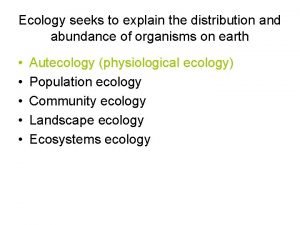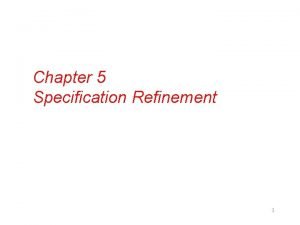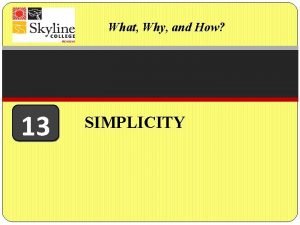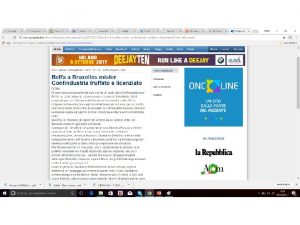Thought for the day True refinement seeks simplicity













- Slides: 13

Thought for the day “True refinement seeks simplicity” -Bruce Lee-

Revision (things to avoid when you write items for a questionnaire) l l l l Ambiguous statements Excessive wordiness Difficult vocabulary Complex sentence structure Unclear instructions Racial, ethnic, and gender bias Double barrel Double negatives

Experimental Research/Design Give an example of a topic that lends itself well to an experimental design l Write it down on the chalkboard Question: l Looking at all the examples listed on the board, what can you say as being the characteristics of an experimental research? l If you have define experimental design in one sentence, what would it be? l

Basic characteristics of an experimental design l l l l Treatment Direct manipulation (of the independent variable) Two groups – control and experimental groups Independent/experimental variable (the predictor or the cause) – the one manipulated Dependent variable (the criterion or the effect) – the ones ‘whose’ changes are observed when the independent variable is manipulated Cause-effect relationship ‘all’ characteristics equated (how do we do this? ) Control (laboratory allows for this? )

Steps l l l l Selection and definition of a problem Selection of subjects Selection of measuring instrument/device Selection of a design (didn’t we do that already? ) Execution of procedure Analysis of data Formulation of conclusion

Crucial steps Expose the groups to the treatment for some period of time Test or measure dependent variable Significant difference between groups?

Forms of manipulation l l l Presence vs. absence (A vs. no A) Presence in varying degrees (a lot of A vs. a little A) Presence of one kind vs. presence of another kind (A vs. B) Any other that you know? Let’s give example for each!

How do we define ‘control’ in an experimental research? l l Efforts on the part of the researcher to remove the influence of any variable (other than the independent variable) that might affect performance on the dependent variable Hmmm…seems too long and complicated! Can we revise this to simplify it? Eliminate or prevent the interplay of confounding variable(s) on the dependent variable : p …or Ensuring internal validity

How do you control confounding (or extraneous) variables? Randomization…randomization in: l 1. 2. l l l Subject selection Assignment of subjects to groups Creates equivalent, representative groups which are same on all relevant variables Otherwise? Difference in the groups will be attributable to some other extraneous variable(s)

External validity Degree to which results are generalizable or applicable to groups and environments outside of the research/experimental setting

Internal Validity l Degree to which observed differences on the dependent variable are directly related to the independent variable, and not some other (uncontrollable) variable l The effect of confounding variables? l Effect of independent variable or something else?

Activity… l l l l l Implementation History Location Subject characteristics Maturation Attitude of subjects Testing Loss of subjects Regression instrumentation

Types of experimental designs l X or X 1 = new or unusual treatment l X 2 = control treatment or usual treatment l O = test (pretest or posttest) l R = Random assignment of subjects to groups
 Day 1 day 2 day 3 day 4
Day 1 day 2 day 3 day 4 Day 1 day 2 day 817
Day 1 day 2 day 817 Complete or incomplete thought
Complete or incomplete thought What passages in the poem explain why the seafarer seeks
What passages in the poem explain why the seafarer seeks A transnational corporate-level strategy seeks to achieve
A transnational corporate-level strategy seeks to achieve Letter seeking information
Letter seeking information The devil comes to steal kill and destroy
The devil comes to steal kill and destroy Benchmarks are baseline values the system seeks to attain.
Benchmarks are baseline values the system seeks to attain. God seeks worshippers
God seeks worshippers Unit 7 lesson 2 india seeks self rule
Unit 7 lesson 2 india seeks self rule Africa seeks a better future
Africa seeks a better future Lesson 2: india seeks self-rule
Lesson 2: india seeks self-rule Autumn is a season of mellow
Autumn is a season of mellow Ecologist seeks to explain *
Ecologist seeks to explain *

























